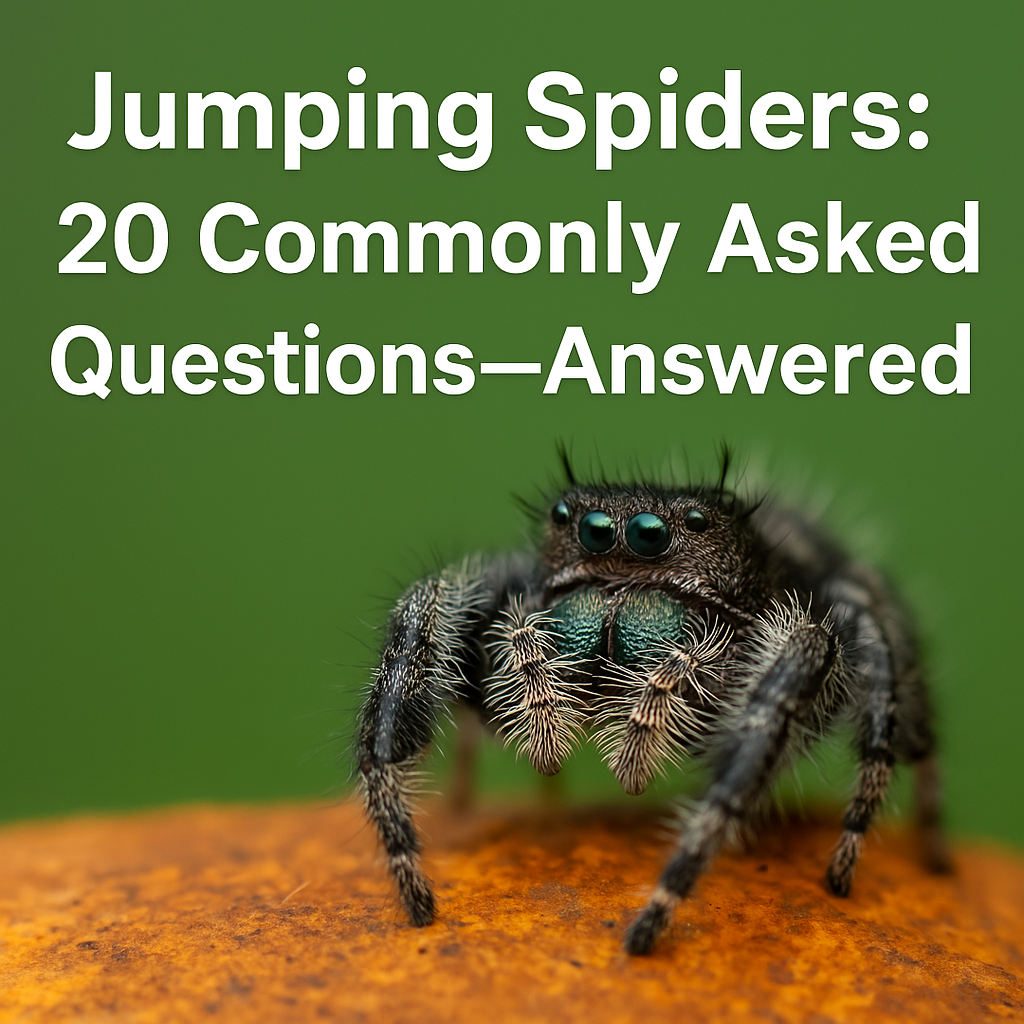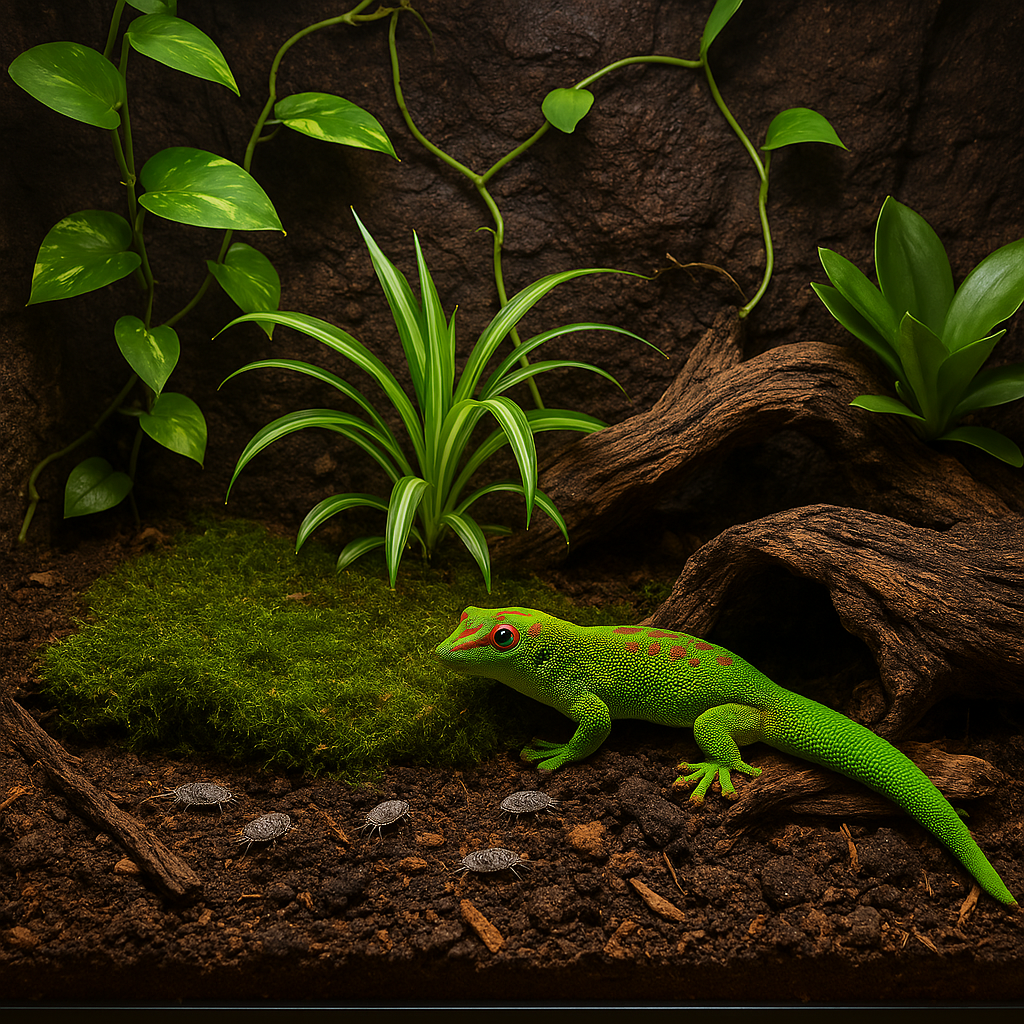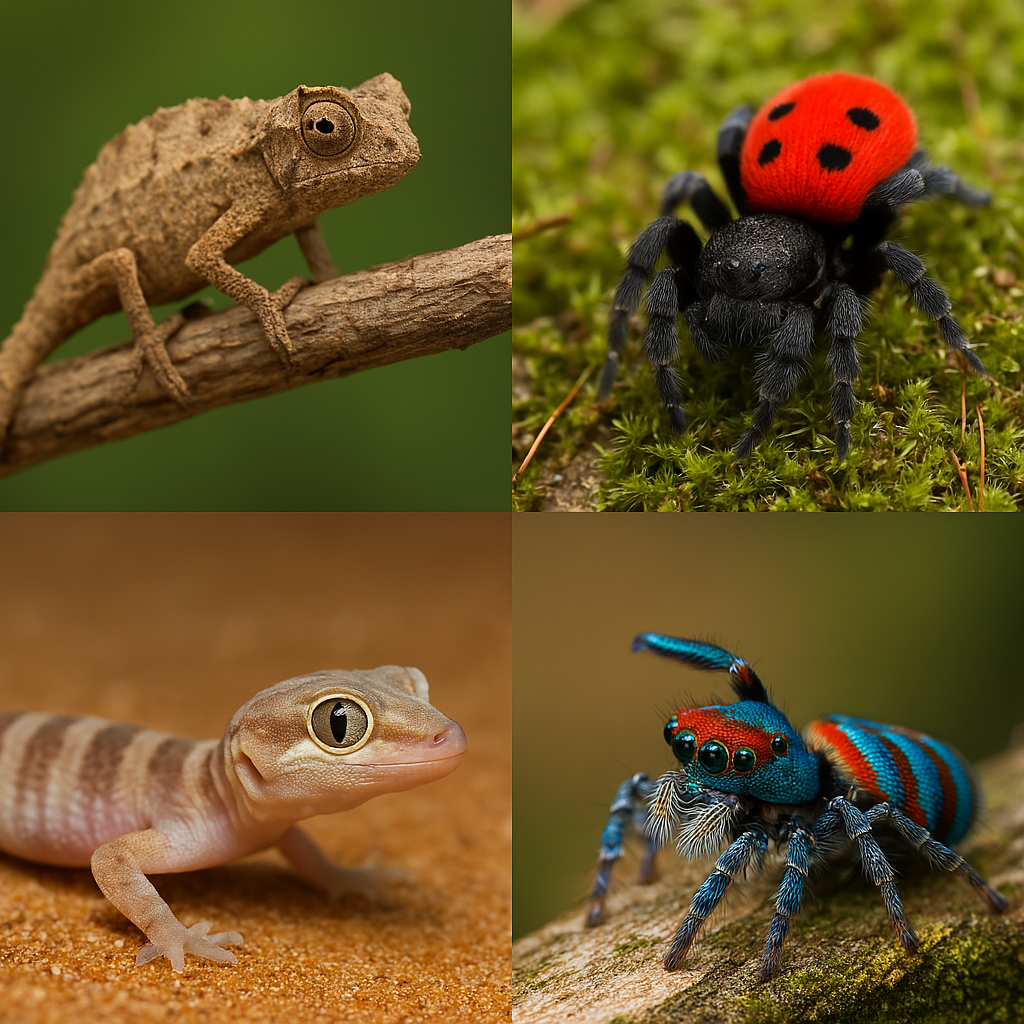Jumping spiders might just be the most charming arachnids on the planet. With their curious behavior, intelligent little eyes, and non-threatening personalities, it’s no surprise they’ve become popular in the pet world—and a fascination online. But as interest in these tiny hunters grows, so do the questions.
Let’s dive into the most frequently searched questions about jumping spiders and get you the answers you’re looking for.

1. Are jumping spiders good pets?
Absolutely. Jumping spiders are fantastic beginner-friendly pets. They’re small, easy to care for, and full of personality. Many keepers describe them as curious, responsive, and even affectionate. They don’t require a ton of space and can thrive in a small, well-maintained enclosure.
2. Do jumping spiders bite? Are they dangerous to humans?
Jumping spiders can bite, but it’s extremely rare and usually only in self-defense. Their venom is harmless to humans—comparable to a mosquito bite in most cases. For the vast majority of people, there’s no medical concern.
3. How long do jumping spiders live?
Most jumping spiders live about 1 to 2 years, though some females can live slightly longer. Lifespan varies by species and care. Short but sweet!
4. What do jumping spiders eat?
In captivity, jumping spiders are commonly fed small feeder insects like fruit flies (Drosophila hydei), pinhead crickets, flightless house flies, or meal worms. In the wild, they eat other small insects, including pests like mosquitoes and gnats.
5. How do you care for a jumping spider?
Jumping spider care includes a secure, well-ventilated enclosure, the right temperature and humidity based on species, small climbing structures, and regular feedings. They also appreciate occasional misting to drink from water droplets.
6. Where can I buy a pet jumping spider?
Reputable breeders (like Exotics Source), specialty online sellers, and sometimes local expos or insect shows offer captive-bred jumping spiders. Avoid taking them from the wild, especially if you’re unsure of the species or their needs.

7. How big do jumping spiders get?
Most jumping spiders range from 1/8 inch to about 3/4 inch in body size. Phidippus regius (the Regal Jumping Spider), one of the largest and most popular species, can reach just under an inch with legs fully extended.
8. What is the best enclosure for a jumping spider?
A small, vertical or cubic enclosure with good cross-ventilation is ideal. Around 4x4x6 inches is plenty for most species. Add fake or real foliage, cork bark, and anchor points for webbing. Keep it escape-proof—jumpers are clever.
9. Can jumping spiders recognize people?
Amazingly, yes—to some extent. Jumping spiders have incredible vision and seem to visually recognize movement patterns and shapes. Some owners swear their spiders “watch” them and learn routines. While we can’t say they form emotional bonds, they are surprisingly interactive.
10. Why are jumping spiders so smart?
Jumping spiders have exceptional vision and a relatively advanced brain for their size. They’re capable of planning hunting strategies, remembering locations, and responding to stimuli in intelligent ways. They’re one of the few invertebrates that show problem-solving behavior.
11. Do jumping spiders need water?
Yes, but not in the form of a bowl. They drink dew-like droplets, so regular misting is essential. A light mist every 1–2 days on the enclosure walls provides all the hydration they need.
12. What is the best food for baby jumping spiders?
Baby jumping spiders, or slings, thrive on tiny prey like Drosophila melanogaster (flightless fruit flies) or springtails. Make sure prey is appropriately sized—no bigger than the spider’s head.
13. How often should I feed my jumping spider?
Adult jumpers can be fed every 2 to 3 days, while younger spiders may eat more frequently. If your spider refuses food, it might be full, preparing to molt, or simply being picky.
14. Do jumping spiders make webs?
Yes—but not to catch prey. Jumping spiders use silk for creating hammocks, shelters, and safety lines when leaping. You’ll often see them make a little silk retreat where they sleep or molt.
15. What species of jumping spider is best for beginners?
Phidippus regius (Regal Jumping Spider) is hands-down the top pick. They’re hardy, beautiful, and relatively large, making them easier to observe and care for. Other beginner-friendly species include Phidippus audax and Phidippus otiosus.
16. Can you handle a jumping spider?
Yes, with care. Many keepers successfully handle their spiders, but it’s always on the spider’s terms. Never force handling, and be sure to work over a soft surface. Jumping spiders are fast, and a fall can injure or kill them.

17. Why does my jumping spider wave its legs?
Leg waving is a form of communication or display, especially in males. It can be part of mating rituals or a territorial gesture. Sometimes, it’s just your spider being inquisitive or responding to movement.
18. What is the difference between a male and female jumping spider?
Males tend to be smaller, with longer, sometimes tufted pedipalps used in courtship. Females are larger, rounder, and often live longer. In some species, sexing is easiest once they’re mature.
19. Why is my jumping spider not eating?
There are several reasons. Your spider could be in pre-molt, which suppresses appetite. It might be stressed by its environment, full from a previous meal, or uninterested in the prey offered. Check humidity, lighting, and prey size to troubleshoot.
20. How do jumping spiders hunt?
Jumpers are visual hunters, using their large anterior eyes to lock onto prey before carefully stalking and leaping with precision. They use silk draglines as “lifelines” while launching onto prey—true aerial acrobats of the spider world.
In Conclusion: Tiny Spiders, Big Personalities
Jumping spiders are packed with surprises—from their vision and intelligence to their interactive behavior. Whether you’re considering one as a pet or simply intrigued by their charm, these questions are just the beginning of what makes these spiders so lovable and fascinating.




Leave a comment
This site is protected by hCaptcha and the hCaptcha Privacy Policy and Terms of Service apply.